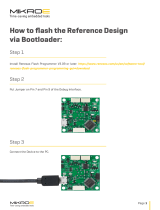
CONTENTS
Chapter 1 Introduction of the tPad..................................................................... 2
1.1 About the Kit ........................................................................................................................................ 6
1.2 Getting Help ......................................................................................................................................... 7
Chapter 2 tPad Architecture ............................................................................... 8
2.1 Layout and Components ........................................................................................................................ 8
2.2 Block Diagram of the tPad .................................................................................................................... 9
Chapter 3 Using the tPad .................................................................................. 10
3.1 Configuring the Cyclone IV E FPGA .................................................................................................. 10
3.2 Bus Controller..................................................................................................................................... 13
3.3 Using the 8” LCD Touch Screen Module ............................................................................................. 14
3.4 Using 5-Megapixel Digital Image Sensor Module ............................................................................... 15
Chapter 4 tPad Demonstrations ....................................................................... 17
4.1 System Requirements .......................................................................................................................... 17
4.2 Factory Configuration ......................................................................................................................... 17
4.3 tPad Starter Demonstration .................................................................................................................. 18
4.4 tPad Picture Viewer ............................................................................................................................. 22
4.5 Video and Image Processing ................................................................................................................ 25
4.6 tPad Camera Application ..................................................................................................................... 28
4.7 Video and Image Processing for Camera ............................................................................................. 31
Chapter 5 Application Selector ......................................................................... 36
5.1 Ready to Run SD Card Demos ............................................................................................................ 36
5.2 Running the Application Selector ........................................................................................................ 37
5.3 Application Selector Details ................................................................................................................ 37
5.4 Restoring the Factory Image................................................................................................................ 40
Chapter 6 Appendix .......................................................................................... 42
6.1 Revision History ................................................................................................................................. 42
6.2 Copyright Statement............................................................................................................................ 42



























